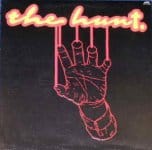 They toiled on the Ontario ‘b’ circuit while reworking some material and writing some new songs, harder and edgier than before. They scored a deal with GRT Records and their self-titled debut album was released in the fall of ’77, and although no singles were released, the album was largely ignored at home, but the lead-off “I Was Only Dreaming” instantly drew comparisons to Jethro Tull because of the flute work. But other tracks like “I Want To Be King,” and “Little Miss Perfection” epitomized their progressive metal sound, and found homes in pockets in the US including Cleveland and San Antonio and several campus radio stations. But not long after the album’s release, the label had to pull it from the shelves because of retailers’ complaints about the graphic nature of the jacket, a picture of a bleeding hand. Instead, a de-sensitized version was released. But unable to get on board any major tours, one by one members lost faith and within a year, only Gagnon and Kersey were left. During that time though, GRT closed its doors. Daffodil Records, the same label that released Dillinger’s two albums, technically still owned the recording rights to The Hunt’s material, and the band convinced them to back further recordings. Label president Frank Davies brought in producer Steve Vaughan (Dillinger, Klaatu) and sent him to Phase One Studios with Gagnon and Kersey. With enough material recorded for an album, they recruited guitarist Paul Dickinson to round out the group, and they worked out the kinks in the new live act while BACK ON THE HUNT was released in April 1980. Unlike GRT, Daffodil released a pair of singles – a cover of the Beatles’ “It’s All Too Much,” which briefly cracked the Canadian top 40, and “Standing In The Road.” But despite some short term sporadic FM airplay at home and in their already established pockets, the record again went largely unnoticed. By 1981, Gagnon left the camp to form The Acetones, and was replaced by Carl Calvert. They returned to the studios with Vaughan and came out with the THRILL OF THE KILL album a year later. The only single “You In The Night” came and went just as fast in Canada, but managed to get some airplay in pockets in the US and became an FM hit in Germany. Other tracks like the lead-off “Show The World,” “The Hills,” and a cover of Free’s “Wishing Well” showed the band was maturing and growing towards a more progressive metal sound, but following another year or so of the ‘b’ circuit, they packed it in. Pacemaker resurrected the band in ’95 with the release of TRACKED DOWN, a compilation of the three albums, which also featured a pair of out-takes and the song “I Want To Be Set Free” from Gagnon’s first recording group called Bullrush. Pacemaker then re-released all three The Hunt albums individually, each without any additional material, a couple of years later. Kersey worked in various groups around the Toronto/St Catherine’s area, while Gagnon eventually formed a John Mellencamp tribute band called Rumbleseat with fellow Acetone Andy O’Connor, and then Justice, then joined Frank Soda‘s lineup after a brief stint with Ian Thomas. When those gigs dried up, he opened his own recording studio and became an engineer and producer, working with the likes of Shania Twain, The Tenants, and Moving Targetz.
|








